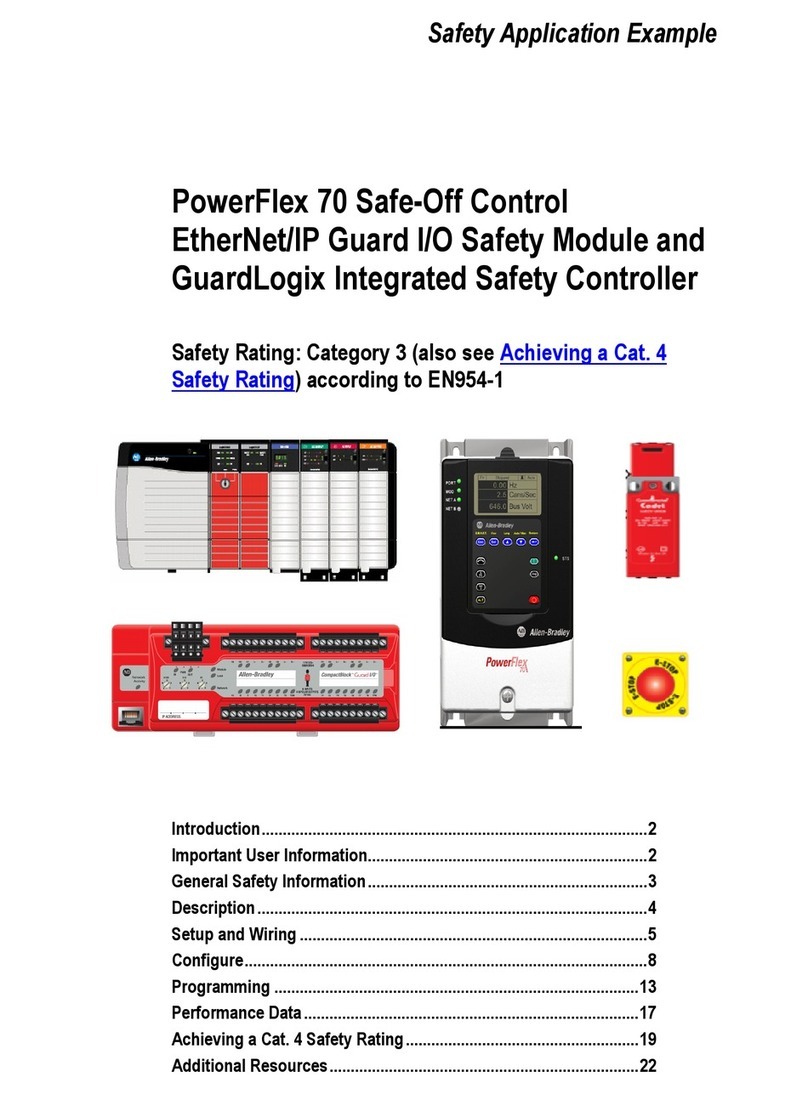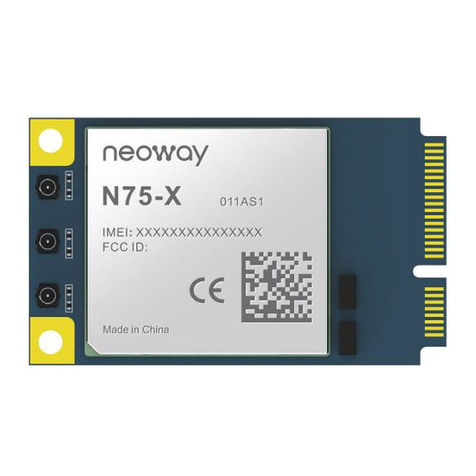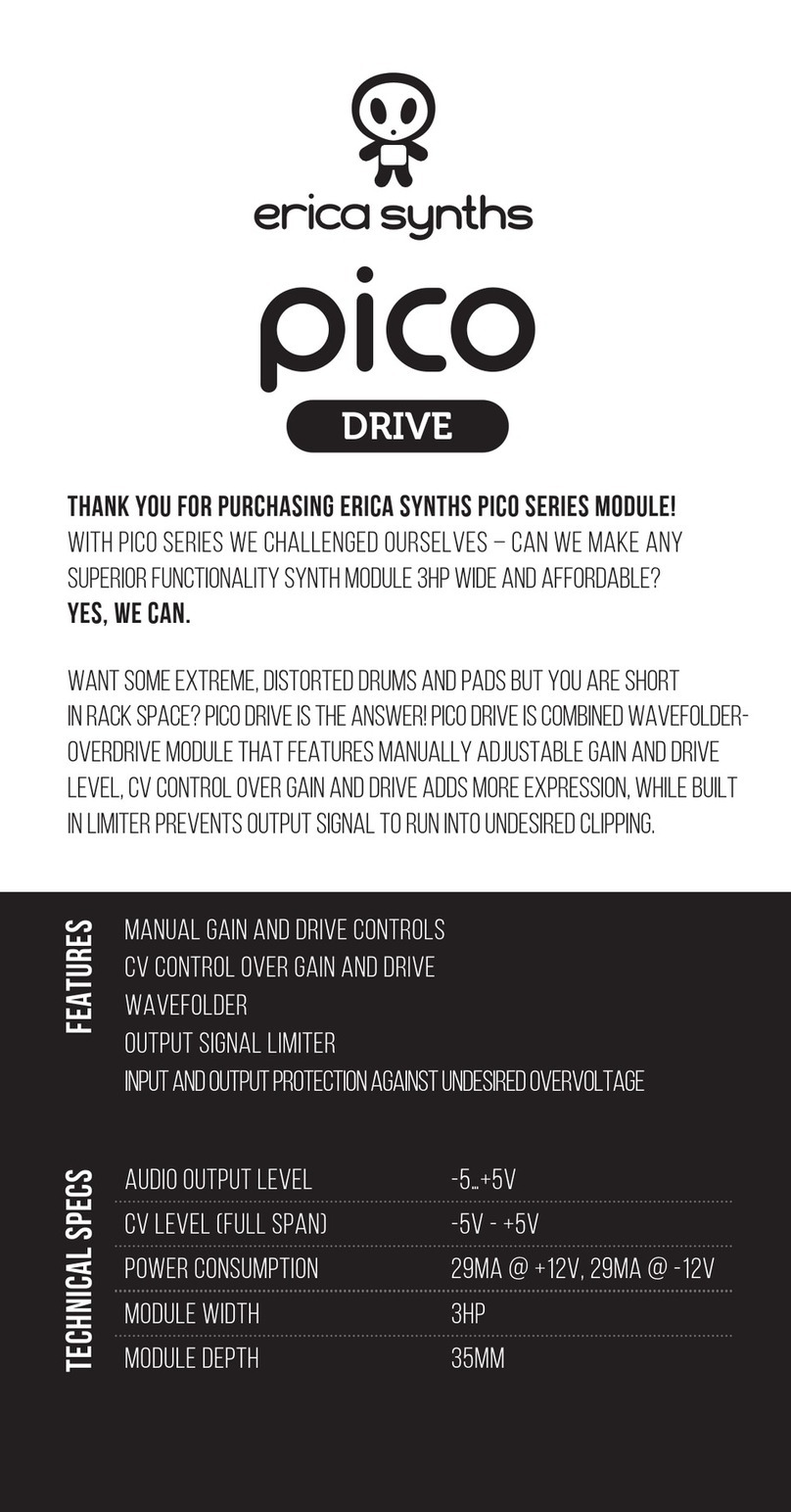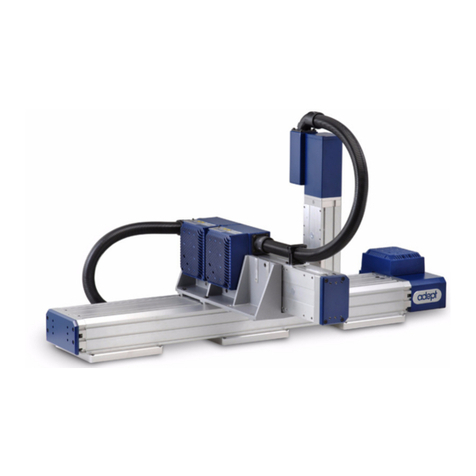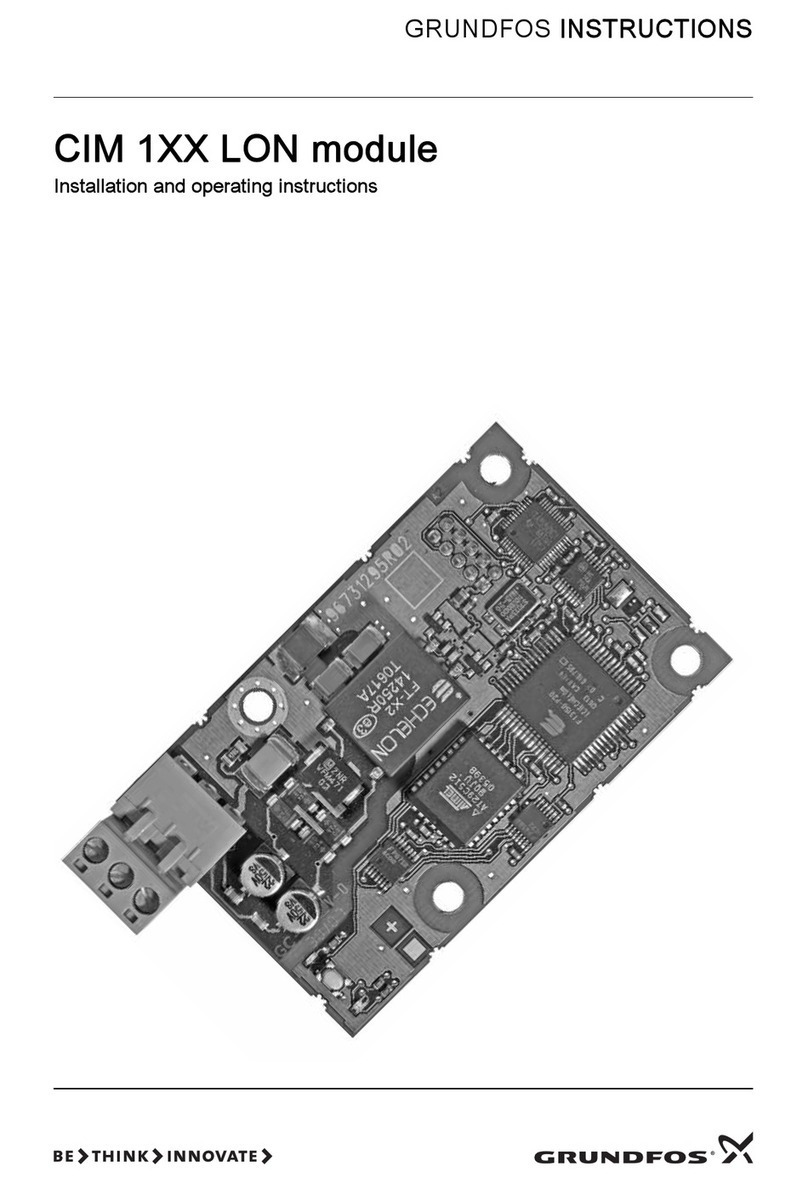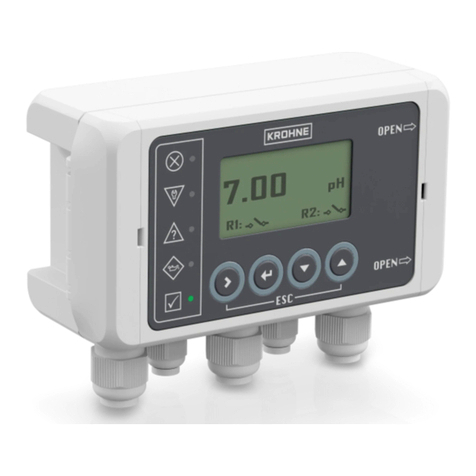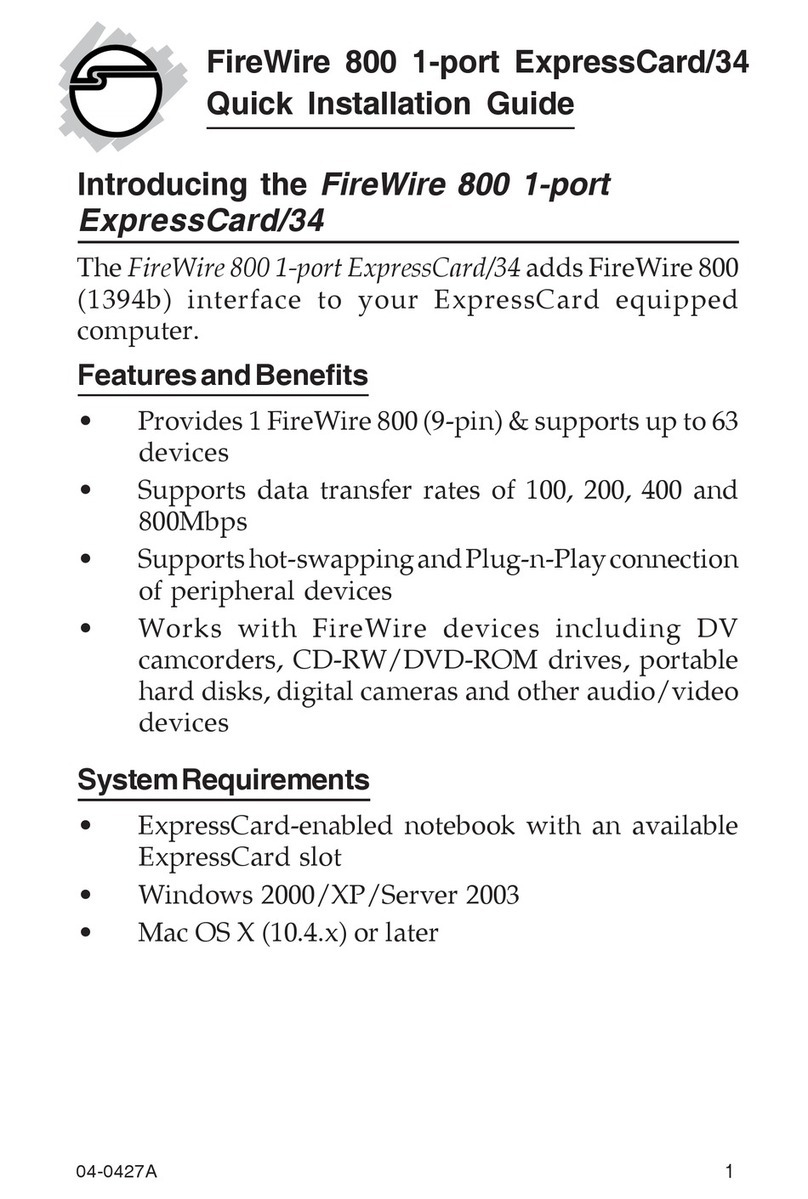ATTOTECH GR020 User manual

Manual
GR020
PIEZO DRIVEN PULSED VALVE
Attotech handelsbolag, Gullåkra Byaväg 18, 245 35 Staffanstorp, Sweden

2

3

4
Content
Introduction...................................................................................................................................5
Applications:.............................................................................................................................5
Principle of operation ...............................................................................................................5
Technical description ...............................................................................................................6
Installation ....................................................................................................................................7
Mechanical mounting ...............................................................................................................7
Cooling .....................................................................................................................................7
Gas...........................................................................................................................................8
Electrical connections ..............................................................................................................8
Connection of the Attotech amplifier (option)...........................................................................9
Operation....................................................................................................................................10
Turning on-off procedure .......................................................................................................10
Turning on-off procedure with the Attotech Driver (Option)...................................................10
Settings ..................................................................................................................................11
Target change........................................................................................................................11
Piezo instructions...................................................................................................................11
Trouble shooting.........................................................................................................................12
Gas leak diagnosis.................................................................................................................12
Attending a leak from the body ..............................................................................................12
Adjustment of the poppet.......................................................................................................12
Electrical problems.................................................................................................................14
Specifications .............................................................................................................................15
Dimensions ............................................................................................................................15
Connectors.............................................................................................................................15
Input / Output specifications...................................................................................................15
Performance...........................................................................................................................15
Limited warranty .........................................................................................................................16
Return procedure ...................................................................................................................16

5
Introduction
The GR020 pulse valve is designed to precisely inject gas in a vacuum chamber. Both the timing
and the amount of gas released can be finely tuned.
Applications:
- High Order Harmonic generation
- Attophysics
- Molecular alignment
- Cluster science
- Electron spectrometers
- Gas phase spectroscopy
Principle of operation
The pulse valve is driven by a piezo electric disc (PZD) on which a small poppet is tightened. It
opens and closes a 1 mm diameter hole where thhe gas flows. The moving parts are kept as light
as possible, which makes opening times as short as 30μs feasible.The PZD and the poppet are
mounted inside the valve body where backing pressures up to 5 bars can be applied. The valve
opens when applying a voltage to the PZD and the backing gas flows in the 1 mm pipe through
the body. The amount of gas is controlled by the voltage applied to the PZD. At the end of this
pipe the target is tightened to the body by two screws. The target is decoupled from the moving
parts; this makes the switch between targets very easy, and allows for custom-made target
designs. The valve can is driven by a voltage gate produced by our piezo valve drive unit,
together with a delay generator, or other pulsed high voltage power supplies. A 120μs electrical
gate corresponds to a mechanical opening time down to 30μs.*
The body of the valve is cooled by a water cooling circuit.
The opening time is estimated from how much the valve-trigger must be temporally detuned
from a laser pulse to completely cancel the high harmonic yield from the laser-gas-interaction.

6
Technical description
An overview drawing of the GR020 can be found below. In the later sections of the manual
references will be given to the numbering and names in this drawing.
4
5
8
7
9
6
16
14
11
13
12
10
2
1
3
15
1. Body - front piece 10. M2.5 slotted screw
2. Body - back piece 11. Piezo electric disc (PZD)
3. M3 hex screw 12. Clamping screw
4. Cooling tube 13. Clamping nut
5. Body O-ring 14. Locking nut
6. Target 15. Poppet
7. M3 hex screw 16. Poppet O-ring
8. Guiding pin 17. Cooling clamp
9. Target O-ring 18. Countersunk M3 hex screw
17
18

7
Installation
Mechanical mounting
Four M6-threaded holes in the body-back are intended for mounting the pulsed valve. The
mounting holes are placed in the corners of a 25 mm side square to fit most translation stages.
The two parts of the body and the position of the cooling hoses can be changed following the
procedure given at the end of next section (“cooling” section). Overall dimensions are given in the
specifications section.
Cooling
90° Swagelok™ elbows are mounted on the ø6 mm copper tube ends of the cooling circuit.
References for these fittings can be found in the specifications section of the manual. Instructions
on how to mount tube fittings can be downloaded from the Swagelok homepage,
“An Installer’s Pocket Guide for Swagelok Tube Fittings (MS-13-151, R3)” page 10
http://www.swagelok.com/downloads/webcatalogs/EN/MS-13-151.PDF
Be aware not to over tighten the tube fittings: one and a quarter of a turn is enough.
The heat removal power of the chiller attached to the internal cooling circuit must be at least 2 W.
A flow of 4-5 l/min of 15°C tap water provides sufficient cooling.
The piezo electric disc must be operated above -40°C. Operating above 25°C has not been
tested, do not exceed this temperature as it might result in damage of the piezo disc and the
moving parts. Recommended operating temperature is 15°C±10°C. Note that the parts have been
fit together at 20°C. Any significant departure from this temperature might require some
readjustments of the moving parts.
The position of the tube ends with Swagelok fittings can be adjusted by loosening the screws
(overview drawing #18) holding the cooling clamps (#17).
Remount the cooling clamps when the position of the fittings is correct. Pay attention to centre the
cooling clamps on top of the threaded holes to prevent damaged threads. A mini quick clamp can
be used to push the cooling clamps towards the curved surface, i.e. towards the gas exit hole.
When you have found the right position a small torque is sufficient to tighten the screws.
Fron
t
Back

8
Gas
The gas connection on the valve body-back is a 6 mm Swagelok positionable elbow. Instructions
on how to mount the tube in the connector can be downloaded from,
“An Installer’s Pocket Guide for Swagelok Tube Fittings (MS-13-151, R3)” page 10
http://www.swagelok.com/downloads/webcatalogs/EN/MS-13-151.PDF
The elbow can be oriented to face any direction, instructions on page 14 in the Swagelok pocket
guide.
For stable operation the backing pressure inside the body must be well regulated. A good quality
passive regulator is usually sufficient.
Electrical connections
The high voltage amplifier driving the pulsed valve is connected to the Lemo connector on the
valve body-back. Make sure that the cables and connectors are specified for 500 V rms. At 5
Bars backing pressure, the negative operating voltage must not exceed -350 V. Keep in mind that
in high pressure atmosphere discharges occur at lower electric fields, hence the voltage limit.
A delay box with microsecond resolution triggered by the laser directly or a photo diode can be
used to feed the high voltage amplifier.
If you ordered the Attotech amplifier, go directly to section “connection of Attotech amplifier”.
Otherwise, we recommend the E470-00 amplifier from PI, though other types might work as well.
Be aware that the piezo disc requires a power up to 50 W from the amplifier for kHz operation.
The shape of the electrical signal should be checked on an oscilloscope with a high voltage probe
prior to operation. Input and output impedances of the equipment must be set correctly to
preserve the signal shape.
Recommended values for the opening gate are 120-500μs.
Delay box Pulse valveHV amplifier
0to-350V
120-500
s
opening
Trigger
0
1V - 3.5 V
T0T1T2
time
0
-100 V to
-350V
T0T1T2
time
G=-100

9
Connection of the Attotech amplifier (option)
Warning
Make sure that your wall power socket delivers the voltage that has been pre-set for the driver
unit and that is indicated on the back of the rack (see picture below, #11).
Description of the driver unit
The front panel of the drive unit is divided vertically in two parts corresponding to inputs,
adjustment knob and monitoring devices grouped in the left part, and the high voltage unit located
on the right part.
1. Main power switch
2. Peak voltage indicator
3. Control voltage select
4. Voltage adjustment knob
5. Low voltage to high voltage connect
6. Low voltage monitor connector, high Z
7. Control input connector, high Z
8. Gate input connector, high Z
9. High voltage offset (disabled)
10. Control input (disabled)
11. High voltage output
Electrical connections
A delay box with microsecond resolution triggered by the laser directly or a photo diode should be
used to feed the piezo drive unit through its gate input connector (#8). It should be a positive
TTL. Recommended values for the opening gate are 120-500μs.
The high voltage output (#11) is connected to the Lemo connector on the piezo valve. If you use
vacuum feedthroughs and extensions, make sure that the cables and connectors are specified for
500 V rms. The control input (#7) can be used to control the output voltage of the device with an
external DC voltage source, for instance a PC with a DAC card.

10
Operation
The valve must be cooled for steady operation and be powered by a high voltage amplifier
delivering negative voltages. Maximum negative voltage is -350 V. The backing pressure in the
valve body should be set up to maximum 5 bars.
Turning on-off procedure
The following is a general presentation of the turning on/off procedure. If you ordered the Attotech
driver, you may skip to section “Turning on-off with the Attotech Driver”.
The trigger frequency must not exceed 1 kHz and the opening gate must be in the range 120μs to
500μs. Once the cooling is on and the backing pressure (1-5 Bar) is steady, progressively
increase the negative voltage driving the valve until you see the pressure in your experimental
chamber rising. It should be noted that the opening is not linear: the valve stays closed up to a
certain threshold (called hereafter the opening voltage) after which the amount of gas sent in the
target increases rapidly with the voltage. Be careful when approaching the typical opening
voltages given in the table in the “specifications” section.
Once the right amount of gas is set, you should let it run for approximately 15 minutes to reach
a thermal steady state. During this time, it might be necessary to slightly readjust the high
voltage.
Note that the opening voltage depends on the gas used (see table in the specifications section)
Scan the delay controlling when the valve starts to open to find temporal overlap of the released
gas and your laser.
To turn off the valve, first, turn down the negative driving voltage, then, turn off the electrical
power, the cooling and close the backing gas bottle.
Turning on-off procedure with the Attotech Driver (Option)
Preliminary checks
Make sure the Main power switch (#1) is off.
Check that the low voltage signal is not connected to the high voltage amplifier, (#5) is
off.
Fully turn counter clockwise the Peak voltage adjustment knob (#4)
Make sure that the TTL signal feeding the Gate input connector (#8) is positive. The
trigger frequency must not exceed 1 kHz and the opening gate must be in the range
120μs to 500μs.
Make sure you are using the right power voltage (120/240V) and that the amplifier’s
socket is plugged.
Turn on the cooling of the valve
Turning on
Apply a steady backing pressure (1-5 Bar) to the gas inlet of the valve.
Turn on the Main power switch (#1)
(Optional). Progressively turn clockwise the Peak voltage adjustment knob (#4) and use
an (high Z) oscilloscope to monitor the signal available on the Low Voltage Monitor
connector (#6). It should show an image of the input gate with the amplitude displayed in
the Peak Voltage indicator (#2) divided by 100. Make sure it is positive. Turn the Peak
voltage adjustment knob (#4) back to zero.

11
At 5 Bars backing pressure, the negative operating voltage must not exceed -350 V. In the
following never turn up the voltage above that limit. It corresponds to an indication of 350
on the Peak voltage indicator (#2).
Connect the low voltage signal to the high voltage amplifier by switching (#5) on.
Progressively increase the negative voltage driving the valve until you see the pressure in
your experimental chamber rising. It should be noted that the opening is not linear: the
valve stays closed up to a certain threshold (called hereafter the opening voltage) after
which the amount of gas sent in the target increases rapidly with the voltage. Be careful
when approaching the typical opening voltages given in the table in the “specifications”
section.
Once the right amount of gas is set, you should let it run for approximately 15 minutes to reach
a thermal steady state. During this time, it might be necessary to slightly readjust the voltage (#4).
Scan the delay controlling when the valve starts to open to find temporal overlap of the released
gas and your laser.
Turning off
Turn down the driving voltage (#4).
Turn off switch #5.
Turn off the electrical power (switch #1).
Close the cooling and close the backing gas bottle.
Settings
The gas flow when the valve is open is dependent on the backing pressure. Stable operation of
the pulsed valve requires the backing pressure inside the valve body to be well regulated.
Several settings of the high voltage, the duration of the gate (T1-T0) and the backing pressure
result in comparable gas dynamics. For instance at a given backing pressure increasing the
opening gate and reducing the high voltage result in the same mechanical opening time
Target change
The mechanical design is made to preserve the alignment when switching targets. Target change
is straightforward; unscrew the two M3 screws (no. 7) and carefully remove the target. Check that
the O-ring no. 9 is still in position and mount the new target. The guiding pins (no. 8) and the
screws define the position of the target, only very slight readjustments of the valve position might
be needed to maximize your signal after target replacement.
Piezo instructions
To keep your valve in a good working condition, we recommend you reading the last section of
the “piezo actuators tutorial” available from
http://www.physikinstrumente.com/en/pdf_extra/PI_designing_with%20piezo_actuators_tutorial_2
005c.pdf
In the tutorial you will find information how to calculate the best combination of opening gate and
high voltage.

12
Trouble shooting
Gas leak diagnosis
A leak observed when the valve is under vacuum, can come from the poppet, the body, or from
the gas tubes and connections in your vacuum chamber. If you have recently opened the body for
service or to adjust the direction of the target the second option is the most likely. If the leak
seems to come from the valve rather than from the tubes and connections in your vacuum
chamber the leak can be located in the following way. Place the valve onto a vacuum chamber
that can be pumped down to 10-5 mbar, the target being placed inside the chamber and the body
outside (see the figure below). KF-40 connectors can be used for this purpose. If the vacuum
goes down as usual after the vacuum pumps have been started the leak comes from the body. In
the opposite case, there is a problem with the poppet and you may proceed to section
“Adjustment of the poppet”.
Attending a leak from the body
The body might leak through the seals of the electrical and gas feed troughs or the O-ring (no. 5)
between the back and front of the valve body. Check if the gas feed-through is mounted
according to the instructions in the “Installation - Gas” section.
If the gas feed through is mounted according to the instructions proceed by opening the valve
body Open the valve body by unscrewing the eight M3 hex screws (no. 3 in the overview
drawing) and pull the back and the front of the valve body apart.
With the valve body open check if the electrical feed through is properly tightened and inspect the
O-ring (no. 5). If necessary, replace it. When closing the body, special care should be taken
not to clamp the electrical wire between the front and the back of the valve body. See point
6 in the “Adjustment of poppet” section below.
Adjustment of the poppet
Adjusting the poppet should be undertaken with great care since this is the most crucial and
fragile part of the valve. The procedure is as follows.
1. Open the valve body by unscrewing the eight M3 hex screws (no. 3 in the overview
drawing) and pull the back and the front of the valve body apart. Pay attention to the
wires still connecting the two parts.
2. Place the front of the body, i.e. the one with the piezo disc on a vacuum chamber, see
the figure below.
Vaccum chamber
KF 40 tube
+O-rings
Pulsed valve

13
* Might be black in some valves
3. Identify the poppet nut. It is the upper most beige or black nut that fits in an 8 mm open-end
wrench.
Loosen the poppet nut, while keeping the poppet position fixed using a flat screwdriver. Turn the
poppet slightly with the screw driver, steps of 1/10
th
of a turn should be enough, finally lock the
position with the poppet nut.
Screwing the poppet results in a tighter contact; unscrewing results in a looser contact.
4. Try to pump down the vacuum chamber. If the leak remains, repeat the procedure (step 3).
Note that locking the position of the poppet with the poppet nut tends to retract the poppet; hence
the leak might reappear. In that instance repeat the procedure from step 4.
If the leak remains after a few iterations completely unscrew the poppet to inspect the poppet O-
ring (no. 16). Replace if necessary.
Once the pressure in your vacuum chamber reach down to 10
-4
-10
-5
mbar you are ready for final
adjustments.
5. Plug the electrical connections. Never adjust the poppet with the high voltage cable
connected. For these test we recommend 150μs opening time and a repetition rate of 1 kHz.
Vaccum chamber
KF 40 tube
+O-rings
Puppet nut Puppet
Poppet*
Poppet nut*

14
Turn on the power supply and increase the voltage. There should be a kHz noise from the poppet
vibrating against the body. If no noise, there is an electrical problem. See the corresponding
paragraph.
If the pressure in the chamber starts rising around -100 V the adjustment of the poppet is correct,
go to step 6. If the valve opens before you reach -90 V you have to turn the poppet a bit inwards,
if it opens after -120 V, you should unscrew it as described in step 5. Before doing these
adjustments make sure to turn off the voltage and disconnect the high voltage cable.
6. Once the poppet is properly set, turn off the HV amplifier, disconnect the HV cable and close
the valve body, carefully check that the electrical wire does not get clamped between the back
and the front of the body.
Pay special attention to position the front and back part of the valve correctly with respect to one
another. Be very gentle and make sure that the screws have entered the threaded holes properly.
When the screws have entered properly, only very little torque is needed to turn the screw in the
threaded hole.
The screws should be tightened in a cross tightening sequence. Add a small amount of torque for
every iteration. Pay attention not to damage the threads. Thanks’ to the large number of screws
they can be tightened with a moderate torque.
7. With the body closed the valve can be tested with higher backing pressures. Values of the
opening voltage for different backing pressures measured on our test bench can be found in the
specifications section.
Electrical problems
If the valve does not open, it might be due to either an electrical problem or to the poppet not
being properly set. To find out if it is an electrical problem, open the vacuum chamber where the
valve is mounted and turn on a kHz driving voltage of -50 to -100 V. If there is a kHz sound, the
piezo disc and the electronics seem to work properly, implying that the problem comes from the
poppet. In that instance follow the adjustment procedure described in the previous section.
In case of an electrical problem, first make sure that none of the cables or the electronics are
faulty, then open the valve body and inspect the Lemo feed through and the piezo disc. If the
piezo disc must be replaced we recommend you to contact us and ship your valve to us for
overhaul.

15
Specifications
Dimensions
Dimensions
Valve body (ØxD) 73 mm x 26 mm
Target (WxDxL) 6 mm x 10 mm x 36 mm
O-rings (inside diameter x width)
Body sealing 54 mm x 2 mm
Poppet 0.72 mm x 1 mm
Target 2 mm x 1 mm or 2 mm x 0.8 mm
Connectors
Input gas connector 6 mm positionable Swagelok elbow, SS-6MO-2-2PR
High Voltage connector Lemo
Cooling connections 6 mm Swagelok elbows, SS-6MO-9
Input / Output specifications
External input voltage range 0 to -350 V
Electrical capacitance 65nF
Electrical Power 50 W
Repetition rate 0-1 kHz
Electrical opening time 120μs to 500μs
Heat removal power 2 W (4-5 L/min of water)
Operating temperature 15°C ± 10°C
Gas backing pressure 0 to 5 bar
Performance
Physical opening time down to 30μs
Backing pressure
(bars)
Opening
voltage
(V)
Settings for the tests: 1 kHz repetition rate, 150μs opening time.
The opening time is estimated from how much the valve trigger must be temporally detuned
from a laser pulse to completely cancel the high harmonic yield from the laser-gas-interaction.

16
Limited warranty
Attotech products are guaranteed against manufacturing defects for one year from the date of
shipment. This warranty covers the cost of labor as well as parts, but does not cover the cost of
transportation to and from our laboratories. Neither piezo electric transducers, nor seals or other
disposable items are included in the warranty. The warranty does not apply when there has been
obvious misuse or mistreatment by the user. Including use in conjunction with equipment which is
electrically or mechanically incompatible, or when damage has been caused by attempted repairs
by the user. Exposure of Attotech products to inappropriate chemicals also voids the warranty.
Except as thus provided, we disclaim all warranties, express or implied, including any warranty of
fitting for a particular purpose. Attotech HB will not assume responsibility for contingent liability
through alleged failure(s) of its products. There are no warranties, express or implied, which
extend beyond this description. Damages are limited strictly to repair or replacement of the
products. Attotech expressly disclaims liability for incidental and consequential damages resulting
from the use of the products.
Return procedure
note describing the problems in the shipment. Also reference your return address. Send the
instrument freight prepaid to:
Attotech HB
Gullåkra Byaväg 18,
245 35 Staffanstorp
Sweden
Table of contents
Popular Control Unit manuals by other brands
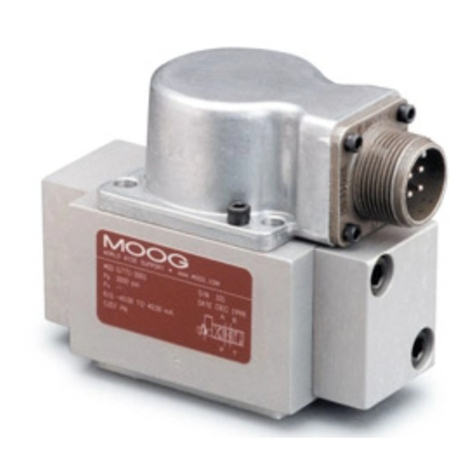
Moog
Moog g77x Series Installation and operation instruction
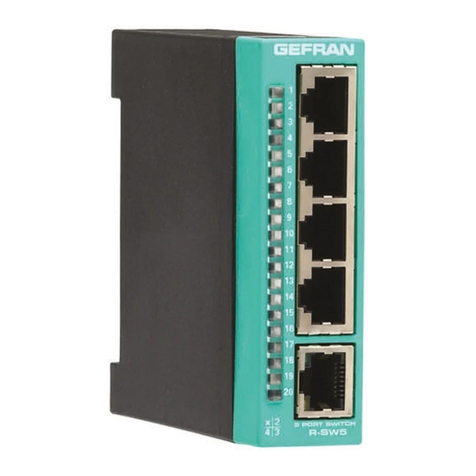
gefran
gefran R-SW5 Installation and operation manual
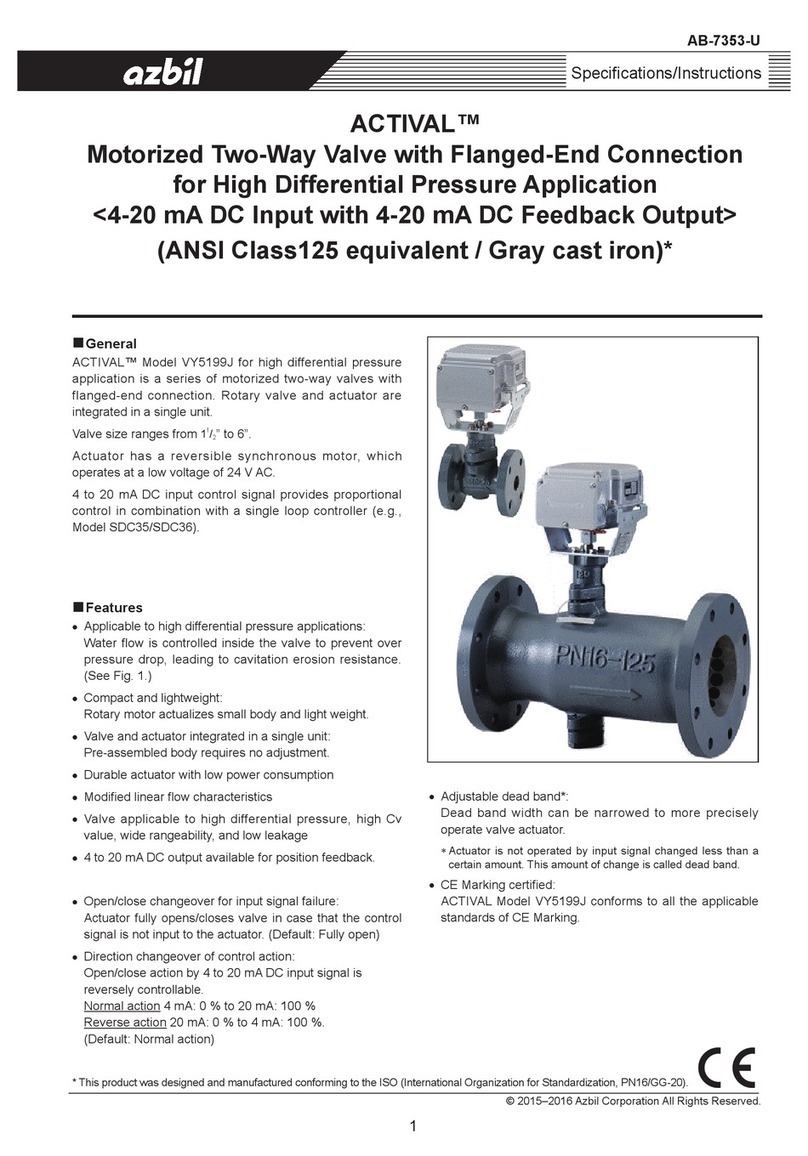
Azbil
Azbil Actival VY5199J Series Specifications and Instructions

Aventics
Aventics CONTROLAIR HE-2 Service information

Gemu
Gemu 605 Installation, Operating and Maintenance Instruction

aquabrass
aquabrass SR3095 installation guide



